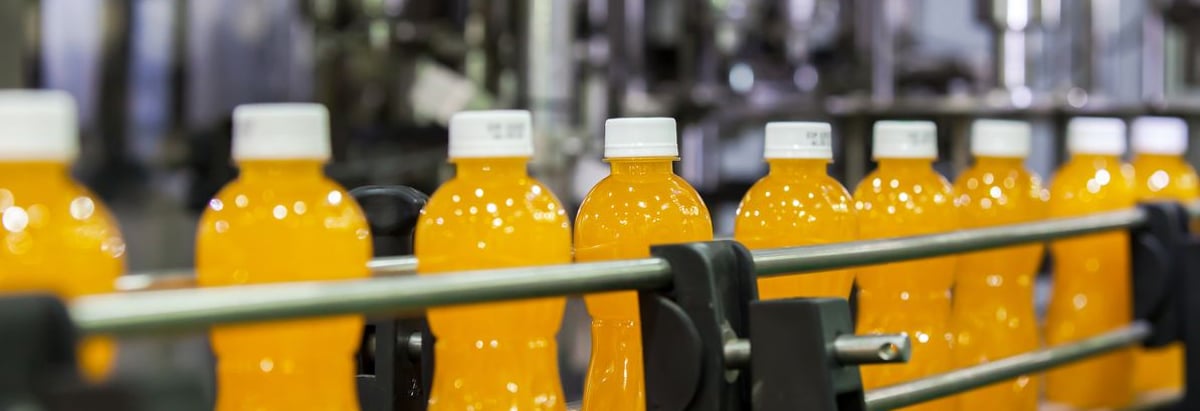
Legendary fund manager Li Lu (who Charlie Munger backed) once said, 'The biggest investment risk is not the volatility of prices, but whether you will suffer a permanent loss of capital.' So it seems the smart money knows that debt - which is usually involved in bankruptcies - is a very important factor, when you assess how risky a company is. We can see that Coca-Cola HBC AG (LON:CCH) does use debt in its business. But the real question is whether this debt is making the company risky.
What Risk Does Debt Bring?
Debt is a tool to help businesses grow, but if a business is incapable of paying off its lenders, then it exists at their mercy. Part and parcel of capitalism is the process of 'creative destruction' where failed businesses are mercilessly liquidated by their bankers. However, a more common (but still painful) scenario is that it has to raise new equity capital at a low price, thus permanently diluting shareholders. Of course, debt can be an important tool in businesses, particularly capital heavy businesses. The first thing to do when considering how much debt a business uses is to look at its cash and debt together.
Check out our latest analysis for Coca-Cola HBC
What Is Coca-Cola HBC's Debt?
You can click the graphic below for the historical numbers, but it shows that as of December 2022 Coca-Cola HBC had €3.21b of debt, an increase on €2.78b, over one year. On the flip side, it has €1.75b in cash leading to net debt of about €1.47b.

A Look At Coca-Cola HBC's Liabilities
We can see from the most recent balance sheet that Coca-Cola HBC had liabilities of €3.01b falling due within a year, and liabilities of €3.46b due beyond that. Offsetting these obligations, it had cash of €1.75b as well as receivables valued at €1.08b due within 12 months. So its liabilities total €3.65b more than the combination of its cash and short-term receivables.
While this might seem like a lot, it is not so bad since Coca-Cola HBC has a huge market capitalization of €9.23b, and so it could probably strengthen its balance sheet by raising capital if it needed to. But we definitely want to keep our eyes open to indications that its debt is bringing too much risk.
We measure a company's debt load relative to its earnings power by looking at its net debt divided by its earnings before interest, tax, depreciation, and amortization (EBITDA) and by calculating how easily its earnings before interest and tax (EBIT) cover its interest expense (interest cover). Thus we consider debt relative to earnings both with and without depreciation and amortization expenses.
Coca-Cola HBC's net debt is only 1.2 times its EBITDA. And its EBIT easily covers its interest expense, being 13.7 times the size. So you could argue it is no more threatened by its debt than an elephant is by a mouse. Also good is that Coca-Cola HBC grew its EBIT at 10% over the last year, further increasing its ability to manage debt. The balance sheet is clearly the area to focus on when you are analysing debt. But ultimately the future profitability of the business will decide if Coca-Cola HBC can strengthen its balance sheet over time. So if you want to see what the professionals think, you might find this free report on analyst profit forecasts to be interesting.
Finally, a company can only pay off debt with cold hard cash, not accounting profits. So we always check how much of that EBIT is translated into free cash flow. Over the last three years, Coca-Cola HBC recorded free cash flow worth a fulsome 81% of its EBIT, which is stronger than we'd usually expect. That positions it well to pay down debt if desirable to do so.
Our View
Happily, Coca-Cola HBC's impressive interest cover implies it has the upper hand on its debt. And that's just the beginning of the good news since its conversion of EBIT to free cash flow is also very heartening. Taking all this data into account, it seems to us that Coca-Cola HBC takes a pretty sensible approach to debt. That means they are taking on a bit more risk, in the hope of boosting shareholder returns. There's no doubt that we learn most about debt from the balance sheet. But ultimately, every company can contain risks that exist outside of the balance sheet. For example - Coca-Cola HBC has 4 warning signs we think you should be aware of.
If you're interested in investing in businesses that can grow profits without the burden of debt, then check out this free list of growing businesses that have net cash on the balance sheet.
New: AI Stock Screener & Alerts
Our new AI Stock Screener scans the market every day to uncover opportunities.
• Dividend Powerhouses (3%+ Yield)
• Undervalued Small Caps with Insider Buying
• High growth Tech and AI Companies
Or build your own from over 50 metrics.
Have feedback on this article? Concerned about the content? Get in touch with us directly. Alternatively, email editorial-team (at) simplywallst.com.
This article by Simply Wall St is general in nature. We provide commentary based on historical data and analyst forecasts only using an unbiased methodology and our articles are not intended to be financial advice. It does not constitute a recommendation to buy or sell any stock, and does not take account of your objectives, or your financial situation. We aim to bring you long-term focused analysis driven by fundamental data. Note that our analysis may not factor in the latest price-sensitive company announcements or qualitative material. Simply Wall St has no position in any stocks mentioned.
About LSE:CCH
Coca-Cola HBC
Engages in the production, distribution, and sale of non-alcoholic ready-to-drink beverages under franchise in Switzerland, the United Kingdom, North and Central America, rest of Europe, the Nordic countries, and internationally.
Established dividend payer and good value.


